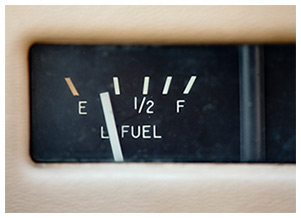Training Tips
|

'Unported' fuel
Running your aircraft's fuel supply down to an extremely low level holds obvious risk. Can you think of a less apparent risk that also arises, especially in uncoordinated flight?
Some aircraft carry a warning against performing slips with flaps extended, because the configuration can interfere with airflow over the horizontal tail. What other hazard enters the slipping scenario when fuel is low?
Low-fuel, uncoordinated-flight profiles run the risk of the remaining fuel supply sloshing away from the lines that carry gas to the engine—a problem known as unporting. Unporting is frequently scrutinized as an accident cause when an aircraft engine fails with some fuel remaining, and when no mechanical damage is found.
Have you ever noticed how an unsecured object in your car slides or rolls to the outside of a turn when you drive a little too fast on that sharply curving highway on-ramp? Then you have some idea of what the fuel in your aircraft's fuel tanks is doing during an uncoordinated flight maneuver.
In one case, all it took was for an aircraft to be in a departure climb with less than the minimum fuel quantity recommended for takeoff for investigators to point out that the manufacturer's fuel-quantity stipulation "is due to the location of the fuel pickups in the tanks on this model aircraft, which would allow unporting and fuel supply interruption with steep attitudes, turning type ground maneuvers during takeoffs, or uncoordinated flight."
Unporting was discussed by a reader who weighed in on an AOPA Pilot Dogfight article on the topic of fuel management techniques. He urged pilots to pay special attention to coordinating control inputs when fuel quantity has been drawn well down, noting, "The fuel follows the ball. If the ball is toward the far end of the tank, so is the fuel. Any time a tank is one-quarter full or less, it is good practice to monitor the turn coordinator to make sure the ball is at least exactly centered."
You are on your way to mastery of required systems knowledge if you can sketch a basic diagram of system components, describe the operating principle, and explain operating limitations. One of those limitations is the pilot, whose flight planning and fuel management can strive for avoiding the unporting risk altogether.
|
|



